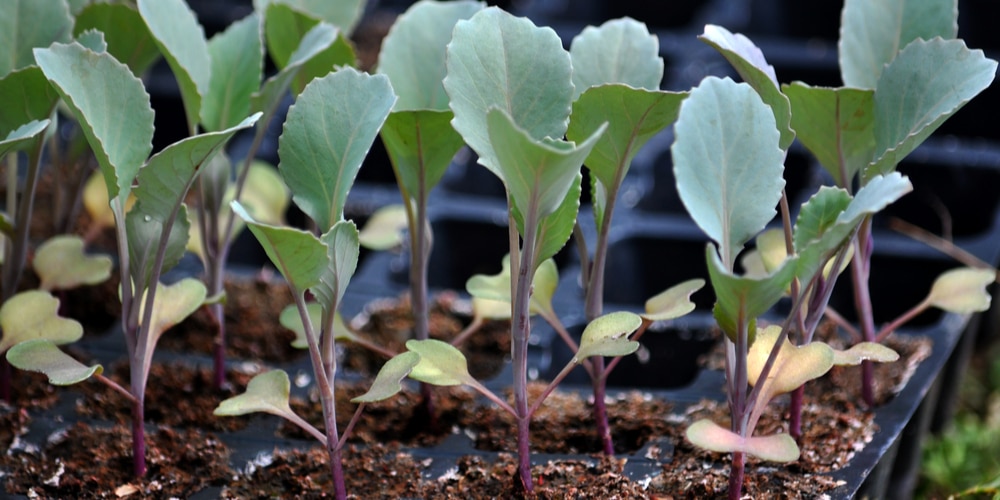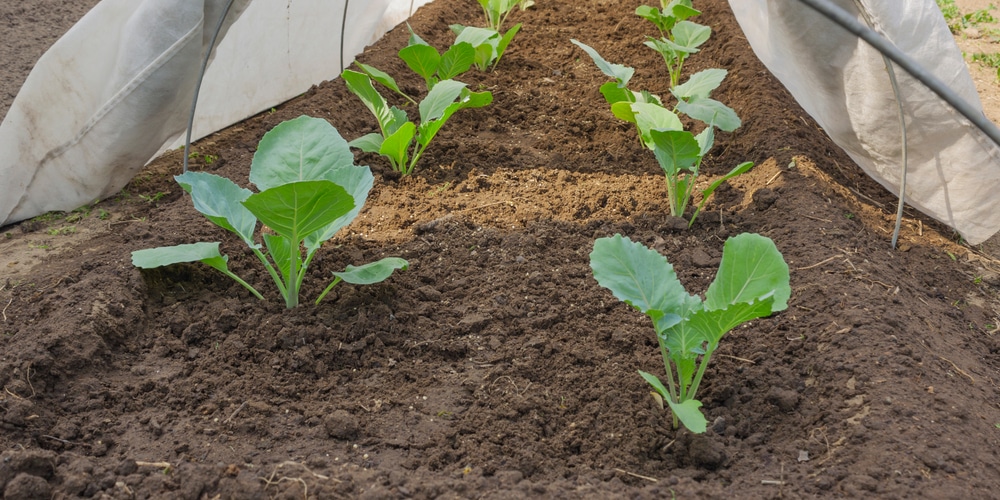You’ve finally done it – you’ve started your cabbage seedlings indoors, and they’re looking healthy and strong. Also, you’ve nurtured them and watched them grow, provided good shelter during the harsh winter months. Now, it’s time to take the next step and transplant them into your outdoor garden.
Transplanting your cabbage crop takes a little bit of preparation and forethought, as all those efforts done indoors can quickly be undone if the cabbage isn’t transplanted properly.
Understanding when to transplant cabbage is crucial for the successful and abundant growth of this cool-weather crop.
When to Transplant Cabbage: The Perfect Timing

Cabbage is a cool-weather crop that thrives in temperatures ranging from 60-70°F. The perfect timing means transplanting the seedlings when the outdoor temperatures have stabilized and are no longer fluctuating wildly.
When the cabbages are first sown, the weather is still chilly, and the plants are delicate. They can be easily damaged by a late frost or cold snap. Ideally, this is done 6 weeks before the last frost date in your area.
You’ll know it’s time to transplant when the seedlings have grown their first true leaves. These are different from the cotyledon or seed leaves that they sprouted with. You’ll start to see 3-4 adult leaves, which is a good indication that the plant is ready to be transplanted in to your garden.
Transplanting too early can stunt the growth of your cabbage crop, so make sure to wait until they’ve developed these true leaves.
It’s important to remember not to wait until early fall to transplant your cabbage, as they need around 80 days to fully mature. If you transplant them too late in the season, they may not have enough time to grow to their full potential.
The Best Conditions for Transplanting Cabbage
For transplanting to be successful, there are a few things you need to take into account. The weather conditions, as well as the condition of your seedlings, play a significant role in how well they’ll survive being transplanted.
Ideal Weather Conditions
As mentioned before, cabbage is a cool-weather crop. This means that they don’t do well in hot weather. Transplanting them during a heatwave is not ideal, as the seedlings will be under a lot of stress.
They also don’t like too much wind, as it can damage their delicate leaves. If the forecast is calling for strong winds, it’s best to wait until the weather has calmed down before transplanting.
Your seedlings also need to be acclimated to the outdoors before they’re transplanted. This process is called hardening off, and it’s essential for ensuring that your plants don’t go into shock when they’re transplanted.
To harden off your cabbage seedlings, start by placing them outside in a sheltered spot for a couple of hours each day. From then, you can gradually increase the amount of time they spend each day outdoors until they can withstand being outside all day long.
After a week or two of hardening off, your seedlings will be ready to transplant into your garden.
The Right Soil Conditions
Cabbage is a hearty plant that can tolerate a wide range of soil conditions, from sandy to clay. However, it is crucial to prepare the soil before transplanting cabbage seedlings for the best results. The ideal soil for cabbage is loamy, with a good balance of sand, silt, and clay.
It should be loose and easy to work but with enough structure to hold moisture and nutrients. The pH level of the soil should be between 6.0 and 7.0. If the soil is too acidic or too alkaline, it can interfere with the uptake of nutrients by cabbage plants.
In addition, the soil should be well-drained to prevent waterlogging. If necessary, amend the soil before planting by adding organic matter such as compost or peat moss. With the right soil conditions in place, your cabbage plants will have a strong foundation for healthy growth.
Preparing Your Cabbage Seedlings for Transplanting
Once you’ve determined that the weather and soil conditions are ideal, it’s time to start preparing your seedlings for transplanting.
Take the Seedlings Out Carefully
Start by gently loosening the roots with your fingers. This will help them to adapt to their new environment more quickly.
Transplanting on a cloudy day is best, as it will protect the seedlings from the harsh sun. If you can’t transplant on a cloudy day, make sure to water the seedlings well before transplanting.
Place Them in Their New Home
Dig a large hole to accommodate the roots of the seedling. Gently place the seedling in the hole, and fill it back in with soil.
Space these cabbages out at least 12 inches apart. This will give them enough room to grow and help prevent disease.
Water Them Well
After transplanting, water your cabbage seedlings well. This will help them to settle into their new home and start growing.
Be sure to keep an eye on the weather forecast, as cabbage seedlings are sensitive to changes in temperature. If a cold snap is expected, make sure to cover the seedlings with a frost blanket or other type of protection.
When to transplant cabbage: Final Thoughts
Transplanting cabbage can be a bit of a tricky process, but it’s worth it for a successful crop. By following these tips, you’ll be sure to have healthy seedlings that have acclimated well to their new home.
Related Article: How Many Cabbage Seeds Per Hole

